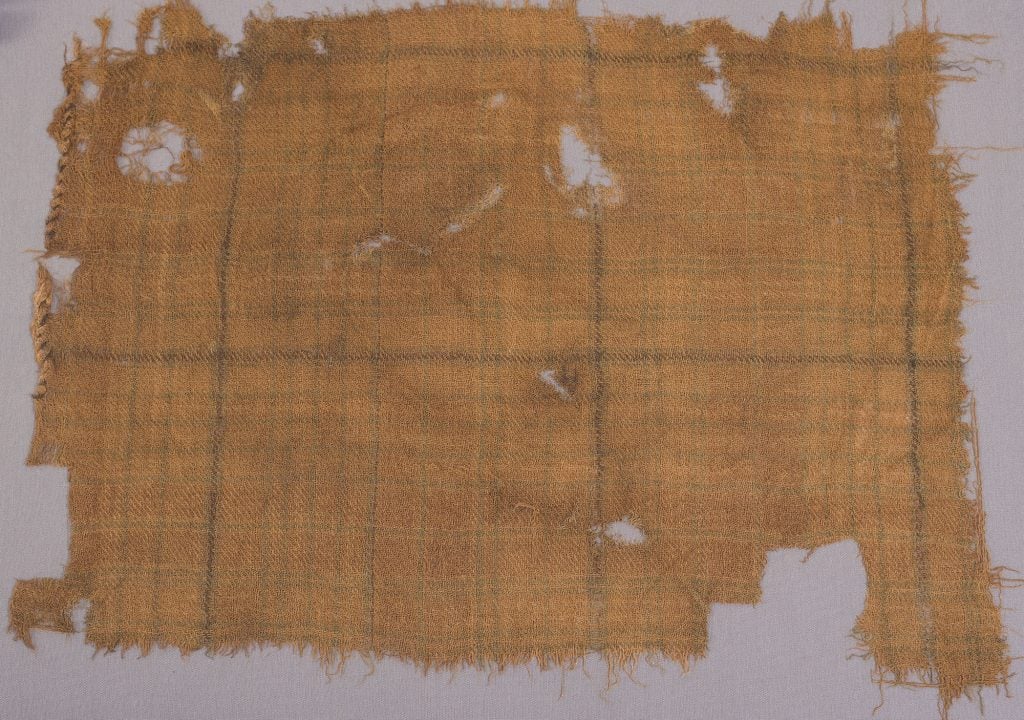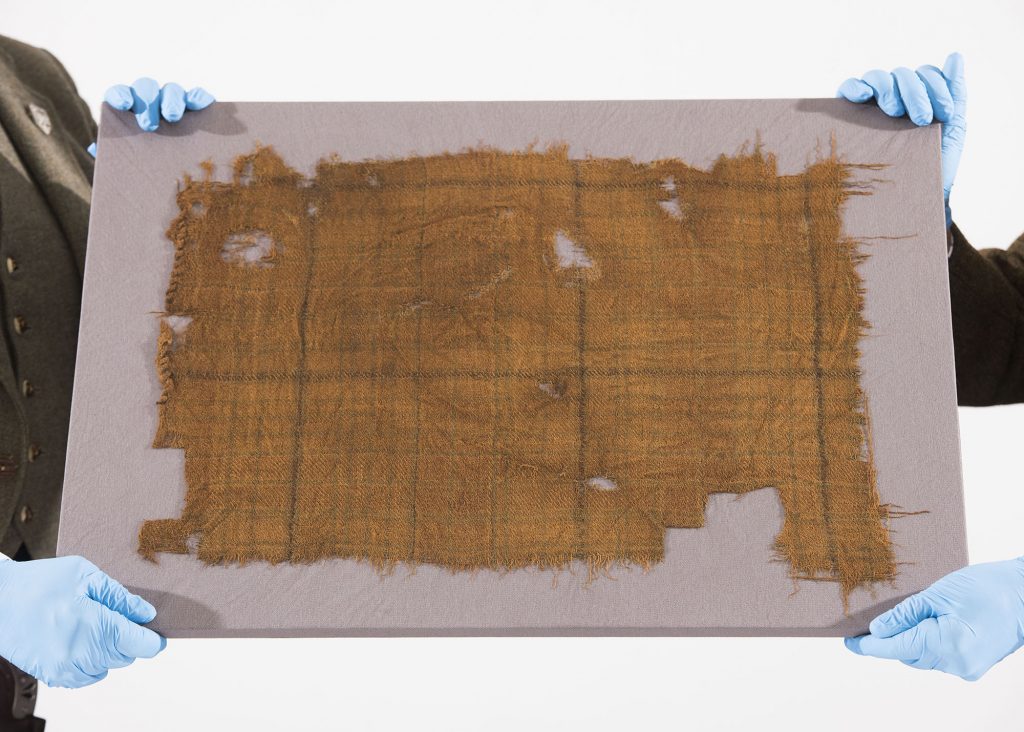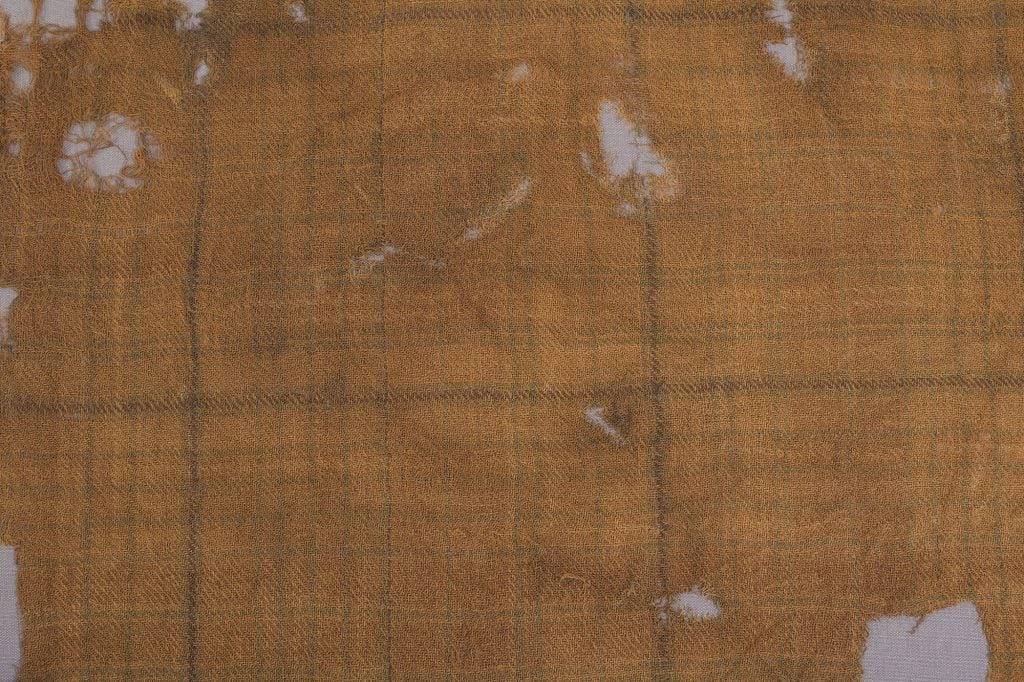A weathered piece of fabric, discovered four decades ago in a bog, is the oldest piece of tartan in the world, with a new analysis determining that it dates from the 16th century.
The textile was found in the 1980s in Glen Affric, an area of the Scottish Highlands about 30km west of Loch Ness. Measuring approximately 21 by 17 inches, the woolen fabric is woven with multiple horizontal and vertical stripes of varying colors, matching what is considered a traditional tartan pattern.
The fabric recently underwent dye analysis and radiocarbon testing, as part of the first-ever study commissioned by the Scottish Tartans Authority to date the artefact.

The Glen Affric tartan. Photo: Alan Richardson, courtesy of V&A Dundee.
The first analysis, carried out by the National Museums of Scotland, identified four dyed colors in the wool, namely green and brown, and probably red and yellow. No artificial dyes were detected, suggesting the tartan was created before the 1750s.
Radiocarbon testing, which involved cleaning the fabric of any peat stains, reduced this period to around 1500 and 1600, making the Glen Affric artifact the oldest known true tartan. (Another tissue fragment, known as Falkirk Tartandates from the 3rd century, but its checkered pattern, woven with undyed yarns, is closer to that of a Celtic tweed than a true tartan.)
“The testing process took nearly six months, but the effort was worth it and we are thrilled with the results!” said Peter MacDonald, Head of Research and Collections at the Scottish Tartans Authority, in a report.

The Glen Affric tartan. Photo: Alan Richardson, courtesy of V&A Dundee.
He added that surviving examples of textiles, particularly woolen fabrics, are rare because they quickly degrade in soil. The Glen Affric tartan only survived because it was buried in peat, which inadvertently preserved the fabric.
While the Chisholm clan held the area around the 16th century, when the tartan was likely made, scientists have refrained from speculating on the provenance of the fabric. “Although we can theorize about the Glen Affric tartan, it’s important that we don’t build history around it,” MacDonald said, adding of the tartan, “we don’t know whose it belonged to.”
The team only determined that the fabric was part of “outdoor workwear” given the rustic construction of the textile, which interestingly contrasts with the use of red dye, a color associated with high status among the Gaels.

The Glen Affric tartan. Photo: Alan Richardson, courtesy of V&A Dundee.
The Glen Affric tartan is now one of 300 items included in the ongoing V&A Dundee exhibition, “Tartan», which explores the imprint of textiles in art, design, architecture, photography and fashion. This is the first time that the historical fabric has been displayed to the public.
“The Glen Affric tartan is clearly a piece of national and historical significance. It probably dates from the reign of James V, Mary Queen of Scots or James VI/I,” said John McLeish, chairman of the Scottish Tartans Authority. “There is no other piece of tartan known from this period of this age.”
“Tartanis on view at the V&A Dundee, 1 Riverside Esplanade, Dundee, until 14 January 2024.
Follow Artnet News on Facebook:
Want to stay one step ahead of the art world? Subscribe to our newsletter to receive breaking news, revealing interviews and incisive reviews that move the conversation forward.
